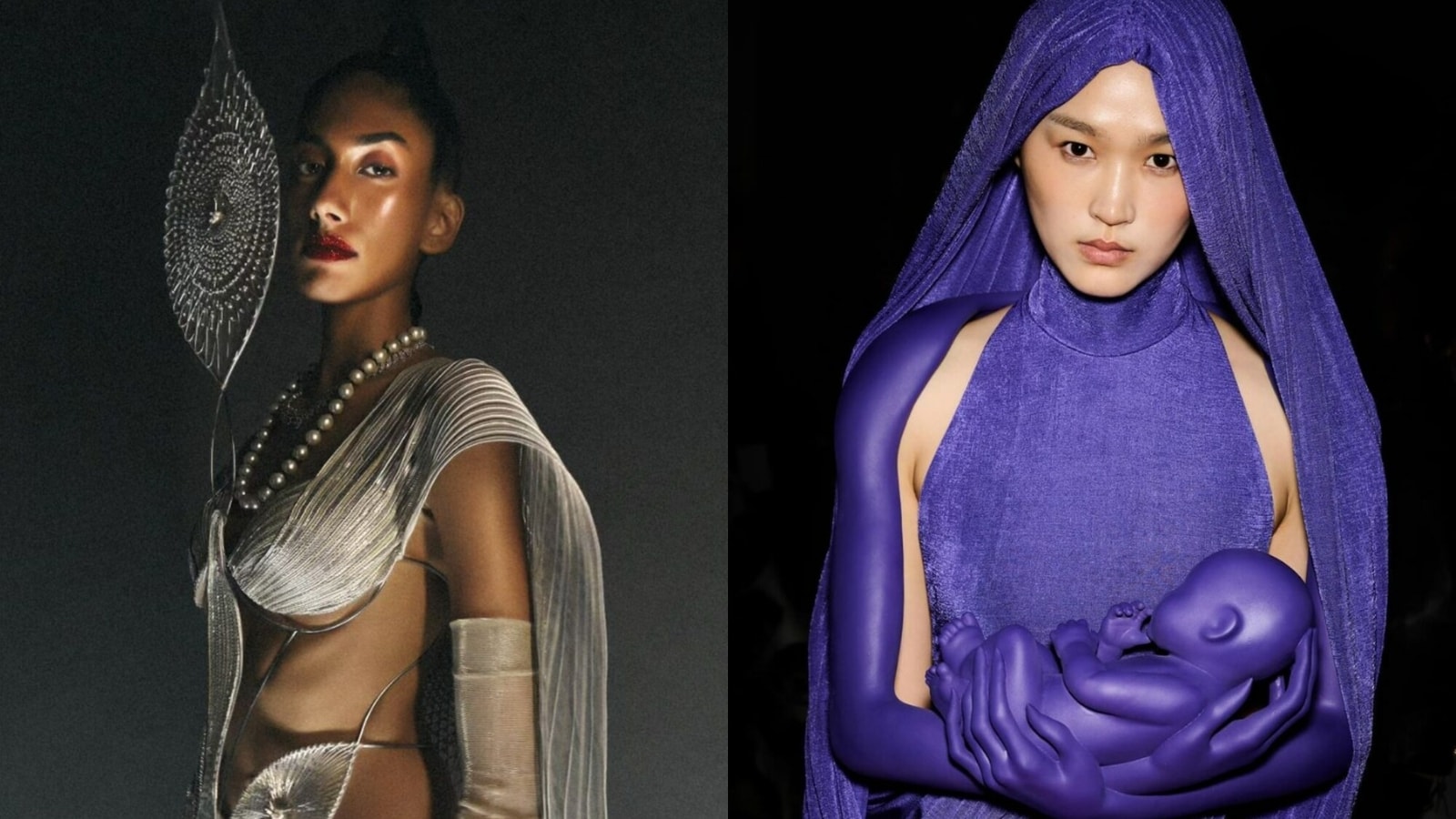Robert Wun recently celebrated his label’s 10th anniversary in Hong Kong with a couture show featuring 12 new pieces at the Hong Kong Palace Museum, in an emotional homecoming. When asked about the theme of the show, the designer said: “It’s about my grandmother, about Hong Kong women and the resilient spirit they embody – strong yet elegant.”
Each design conveyed a narrative of power and femininity, fusing striking visual elements with detailed craftsmanship. The collection featured structured bodices, statement hats and exaggerated, sharp false nails that added a rebellious edge. In an unconventional gesture, the models also held vintage-style cigarettes, which let out delicate trails of smoke that enhanced the show’s theatricality.
These surreal looks are the latest from Wun, who is known for his transformative designs based on liminal concepts such as the passage of time or the seasons. This time, he highlights the essence of Hong Kong in subtle ways, drawing inspiration from vivid images from his memory: the lively concrete jungle, the recognizable “granny T-shirts,” and street patterns that embody the essence of home for him. “I don’t want to present ‘Hong Kong’ in too direct a way. I think more honest expressions can resonate deeply with the audience,” he said. While Wun’s fabulist designs may seem like the first to kick off an emerging trend, designers in India have long been designing within the genre of magical realism.
For designer Amit Aggarwal, his new collection was more deterministic. The Indian designer focused on the “cause-and-effect nature of time” and how “time shapes itself through various forms and structures, blending order and fluidity in every moment” for his FDCI India Couture Week collection. “This collection combines philosophical, mythological, religious, scientific and cosmological ideas, creating a unique vocabulary for the brand. With ANTEVORTA, we delve deeper into the profound relationship between time and the universe, emphasizing that nothing exists independently of it,” he told Elle.
Designers’ obsession with the fantastical is not as new as we might think. Magic, fantasy and fabulism have always had their place in haute couture. Another Indian master who employs this concept is Gaurav Gupta. His collection for Haute Couture Week was called Arunodaya, symbolising “the mystical transformation of night into day, symbolising hope, renewal and the endless possibilities that come with every new beginning.”
Similarly, a little-known Indian designer who uses this subversion for wearable garments rather than couture is Ashish Gupta. His political work under the Ashish label is comprised of sequins and aims to “disturb and trick the eye, with trompe l’oeil effects and unexpected references.” The designer’s use of sequins to create knitwear, as well as his playful yet seditious take on fashion, introduces a sense of imaginative exploration – qualities that evoke the spirit of magical realism, but in a very artistic and down-to-earth way. “Part of my attraction to sequins is that collision of high and low taste. When I first started designing, they really had this suspicious association with a cocktail dress. I love a bit of bad taste, so that was part of it,” he told The Guardian in 2023.
One of the industry’s strong suits, however, is PELLA. While the designer’s current website is not up and running, founder Priyanka Ella Lorean Lama often appears at offline couture festivals. “I incorporate deliberate imperfections into the design to give an ‘incorrect’ solution to an otherwise correct norm. My patterns are usually developed from a single block of fabric requiring minimal measuring and sewing,” Priyanka told Platform.
The transitional space between magic and realism has been a big part of the haute couture movement and alongside the likes of Cheney Chan, Maison Margiela and Maison Schiaparelli, it becomes a task born of duty to keep an eye out for Indian designers claiming their space in the genre.
Disclaimer:
The information contained in this post is for general information purposes only. We make no representations or warranties of any kind, express or implied, about the completeness, accuracy, reliability, suitability or availability with respect to the website or the information, products, services, or related graphics contained on the post for any purpose.
We respect the intellectual property rights of content creators. If you are the owner of any material featured on our website and have concerns about its use, please contact us. We are committed to addressing any copyright issues promptly and will remove any material within 2 days of receiving a request from the rightful owner.

